AKA: Mantis Fist Fighter
Director: Yip Wing Cho
Cast: Leung Kar Yan, Eddie Ko Hung, Wong Yat Lung, Chin Yuet Sang, Lee Kwan, Fang Mien, Ma Chin Ku, Suen Lam, Shih Ting Ken, Au Lap Bo
Running Time: 90 min.
By Joseph Kuby
Cannibalistic Cult Classic!
Thundering Mantis (a.k.a. ‘The Mantis Fist Fighter’ or ‘Crazy Mantis’) is a film that has garnered quite a notorious reputation over the years for introducing audiences everywhere to cannibal Kung Fu. Back in the ’70s, the film was hugely popular when shown in the Times Square theater. It was additionally shown in various other cinemas in New York to vivid fanfare.
The story is quite generic with it possessing a formulaic series of plot points that almost form an A-Z narrative prototype. An innocently simple-minded yet easily provoked youngster comes across thugs (A), gets lucky when dealing with the nobodies but gets his ass handed over to him by the head honcho (B), finds master (C), begs master for tuition (D), trains with master (E), a bond develops (F), villain kills master (G) and student takes revenge (H).
Though there are some things which rise this film above average. The story was fairly routine but not completely by-the-numbers. There’s a scene where Leung’s character Ah Chi gets set up in a scenario where the odds are stacked against him to the point that we expect him to take a fall but astonishingly he survives unscathed and as the clear victor no less.
The person who wrote the script was Cheung Yan See. He had been the director for classic flicks such as Shaolin Ex Monk, Struggle Through Death, Incredible Kung Fu Mission and Northern Kicks, Southern Fists. As a screenwriter he was considerably accomplished. He had written the scripts for Traitorous (which featured Sammo), Shaolin Ex Monk, Tattoo Connection, Sleeping Fist, Dance of Death (which Jackie choreographed melees for), 18 Bronzemen, Shaolin vs. Lama, Incredible Kung Fu Mission, Eagle’s Claw, Story of the Dragon (with Bruce Li), as well as The Hot, the Cool and the Vicious.
He penned Bruce Li’s smash hit Exit the Dragon, Enter the Tiger and Return of the Tiger (a.k.a. Silent Killer from Eternity) too. Even Jackie’s Snake and Crane Arts of Shaolin had its story written by Cheung. Chen Kuan Tai’s ninja movie A Life of Ninja had its scribe in the form of Cheung too. Ditto with Challenge of the Lady Ninja (the female version of Five Element Ninjas).
There were some ingenious funny gags and the narrative had a good message to make about the importance of modesty and temperance.
Now, granted, The Prodigal Son is arguably the finest Kung Fu film to convey the meaning of restraint and Fist of Fury is probably the most definitive for conveying the second importance. But for a film which is both a Kung Fu comedy and a revenge bloodbath, it succeeds in mixing these elements together in a cohesive whole no matter if they were defined better separately in other movies.
The Kung Fu action was choreographed by Robert Tai Yee Tin. Robert Tai is one of the most influential and underrated Kung Fu directors. Rob’s influence was such that some of the Shaw productions actually came to a standstill when he stormed off set after an argument with Chang Cheh. Another engrossing piece of trivia is that when shooting the fight scenes for these films, Robert would actually give the actors more moves than he intended to shoot; this was to avoid the performers slowing down, due to tiredness, towards the end of each take.
His directorial debut Shaolin vs. Ninja is notable for its innovative use of wirework which was to become a recurring feature of his films and was undoubtedly an influence on fellow film maker Tony Ching Siu Tung. Tony’s brother, Cheng Siu Lung, used to work as a sound effects editor for Robert Tai giving Tony access to the rushes for Robert’s films.
He attended the Fu Shing Opera school in Taipei, Taiwan where his fellow classmates were Angela Mao, Judy Lee, Lee Yi Min, James Tien, Chang Yi and Chiang Sheng. However, the school wasn’t as strict as Jackie Chan’s since Rob was able to skip class to earn extra class by working on film sets.
Rob was responsible for bringing us the martial mayhem in such Shaw B’ classics like Chinatown Kid, The Brave Archer, Kid With The Golden Arm, Five Deadly Venoms, Crippled Avengers, Invincible Shaolin, Shaolin Rescuers, Naval Commandos, Ten Tigers of Kwantung, Heaven & Hell and Shaolin Daredevils.
Outside of the Shaw compound, he had been the fight arranger for classics like Ninja: The Final Duel, Incredible Kung Fu Mission and A Fist Full of Talons.
As expected from a person of such caliber, the action in Thundering Mantis is way above average for the most part. Any shortcomings that can be perceived in the film’s other departments is gleefully compensated with the moves on display here.
The best action scenes in the film are the ambush in the boss’ lair, the ambush at the fish-seller’s house and the final showdown which contains a blistering performance from Leung Kar Yan – making this a sensationally above-average film out of somewhat standard material.
As one may tell from the review I gave for My Life’s on the Life, the performance he gives stupendously comes out of nowhere but is never nonsensical or incoherent due to the events which make him achieve this mental metamorphosis. It’s ironic because when I first read about Thundering Mantis*, a film critic said something to the effect which gave the impression that Leung Kar Yan actually turned into a mantis. I suppose he let the connotation get to his head and worded it in such a way that any viewer who hadn’t seen the film would have taken that comment too literally.
But anyway, when LKY snaps, it sure is quite a sight (and sound) to see (and hear)! The only thing that ruins it is when the main theme tune plays (which undermines the seriousness of what is essentially a cathartic carnage) and, inclusively, when broad humor briefly seeps in (when Ah Chi head butts the stomach of a fat henchman and contorting funny faces due to his head not being powerful enough to churn his opponent’s stomach).
Another thing that slightly ruined it for me is when Leung was doubled for one shot which involved lots of acrobatics. I’m not completely against stunt doubling but the doubling was very obvious as the double was a guy with an afro and slightly different girth. It makes Cynthia Rothrock’s doubling (courtesy of Meng Hoi) in Righting Wrongs seem subtle in comparison).
Though thankfully the music, stunt-doubling and humor is kept to a minimum and only dark humor comes into fruition such as when Ah Chi scares off multiple attackers as he is inflicting considerable pain on a hapless and hopeless lackey. A worthy mention of the black humor on display is when the main villain gets his comeuppance…and, BOY, what comeuppance!
Which also brings us to what may have been if we had Chang Cheh as the director…
If Chang was the director for this, the humor (if any) would be extremely dark (darker than any kind of horror flick made by George Romero, Sam Raimi, Wes Craven, you name it). The violence would have been extremely grotesque, putting films like Crippled Avengers to shame and making something like Five Element Ninjas appear to be PG-13 in comparison. Even the somewhat grim Masked Avengers would have paled in comparison.
To put it simply, the finale alone would have been his most violent work and the sequence alone (had he directed it of course) would have been more violent than all of his films combined.
Now, the finale for THIS take on a ‘revenge tale gone loony’ is still quite macabre. I won’t spoil it but let’s just say that it makes other vengeance-fueled fights look civil. If you saw Jackie’s ‘Bruce Lee moment’ in Dragon Fist and thought “WHOA, look at how savage Chan was when he punched that guy a dozens of times in the face” then you’ll be bewildered by LKY’s maniacal portrayal of an avenger. There’s no element of courtesy such as giving mercy to an injure enemy fleeing for his life.
Judging by this take on the finale alone, it’s easy to see how Chang would have upped the ante….IMMENSELY. We would have seen more biting of limbs (whether they would have been ripped off and then eaten is open to thought), flesh being ripped apart, veins being ripped out with blood squirting everywhere like a garden sprinkler (and perhaps with Ah Chi sucking them as if they were beverage straws) and more limbs being dislocated beyond farcical proportions that you can’t help but wince than laugh.
In Chang’s hands, the violence in this would have been enough to rival the Italian horror flicks of the period (i.e. the cannibal/zombie stuff/fluff) as well as Evil Dead (which began production in the same year Thundering Mantis was made – 1979). With the HK film industry, at this point in time, naïvely eager to win approval of the international market, perhaps this should have been co-directed by an Italian horror maestro to add another layer of violence and gritty realism.
Under that alternative scenario, the British Board of Film Classification would have banned the film under its ‘video nasty’ list due to possibly instigating a series of events where martial artists with vendettas go around chomping on people.
Continuing on that angle, the violence would have been not only enough to make it ‘The Story of Rikki’ of its day (making Five Element Ninjas seem like a joke), not only enough to be banned from most Asian territories (effectively making it, alongside Shogun Assassin, one of the premier video nasties to come from Asia) but it would have been enough to get Chang Cheh fired from Shaw Brothers and possibly blacklisted from every single Hong Kong film studio going.
The previous suggestion may seem far-fetched but bear in mind that as his films became more violent, they played less well to Hong Kong audiences who preferred more cheerful fare. Even Sammo and Jackie have noted that it’s very easy to get blacklisted in Hong Kong as John Woo and Conan Lee have learned the hard way.
Think about it, the sheer controversy of making what would be a typical run-of-the-mill Kung Fu pic into something that resembled a Western horror/exploitation movie whilst alienating audiences, studio heads and critics in the process (ala John Carpenter’s The Thing) would be enough to kill off the career of any Hong Kong movie director.
If anything, Chang would have probably had to relocate to Japan – a country where overly violent films have often made big bucks (even if they flopped or performed moderately elsewhere) e.g. Commando, The Killer, The Thing and Cannibal Holocaust (the latter which became one of the top ten highest grossing films in Japan).
Now, whether Thundering Mantis would have equaled or surpassed Cannibal Holocaust as the most banned film in the world is another question entirely.
In a time when seemingly every famous horror movie is getting revamped, I think Thundering Mantis would make for a delightful remake. I can imagine only Quentin Tarantino or even Bey Logan greenlighting such a possibility. If I was in a position to remake this film, the film wouldn’t fall under the Mandarin Wuxia category. It would be a film where the comedy is mostly subtle with a strong emphasis on the bonding between the protagonist and various characters so that the conclusive descent into madness is made all the more shocking.
The remake should concentrate on ground-based fighting with no wires or CGI. The visual style would be realistic so that it doesn’t feel like you’re watching a movie or a cartoon like a lot of recent Hong Kong films. The acting style would be more Western in flavor with very few melodramatic moments. The structure of the film would be different in that the ending is extended so that the hero goes a rampage where he kills people he deems as callous.
It then becomes something of a slasher narrative or a monster movie with a twist.
The denouement to this film recalls The Victim (Beardy going bonkers) except without the fantastic choreography, camerawork, editing and adept usage of camera speed. Which is a shame since while the action by Robert Tai is very good, it doesn’t hit the same emotional notes as Sammo’s groundbreaking masterpiece. But then again not many people have that same visual and visceral flair for action the way Sammo has.
To clarify more on this, Sammo’s mastery of filming action works not only on an aesthetic level but one that contains just as much emotional power. The way je tends to have that particular grasp of maintaining characterization and perhaps taking it to the next level within the context of an action sequence. Sammo was always perceptive enough to advance a film’s plot through one of his trademark action set-pieces.
His sense of narrative economy is unrivaled; along with his ability to utilize editing and hard-hitting choreography to craft often brutal (yet somehow beautiful) fights. In the realm of fight movies, Sammo is the master of drama, tragedy and memorably brutal action. When someone gets hit in a Sammo movie, you feel it! Unlike most movies of this ilk (not just old school) where power is implied rather than truly felt.
That’s why it’s kind of a missed opportunity that Sammo wasn’t able to work on the movie and explore the psychological hell-hole Ah Chi has fallen into. The trauma, the mania…Sammo would undoubtedly have upped the vehement build-up, overall momentum and emotional power.
Don’t get me wrong, Robert and Leung do make sure they emphasize this competently rather than simply have Leung act crazy during the less active moments; but there’s just this feeling I get that Sammo would have explored more fully the morbid abyss that Ah Chi has sunk to and it would have left one hell of an impression on the viewer (people who’ve seen The Victim will testify to this).
With someone like Ringo Lam as director, you can just imagine how nihilistic the tone of the film would have been.
God knows what would have happened if we had Sammo AND Cheh working on this film!!!
Either way, the action would have been cannibalistic and ballistic in equal measures.
To end this review on a more happier note, there are some positive things to be said…
Regardless of how tame and anemic the film may be for Chang Cheh’s standards, Ah Chi still manages to pull of several things which makes Hannibal Lecter’s attempts at cannibalism look like fancy-pansy tea parties.
The inclusion of the child actor, Wong Yat Lung, makes this film discernible during a time when hundreds of Kung Fu comedies were being produced in Hong Kong and Taiwan. Some of the gymnastic feats Wong does (as can be seen in the opening sequence for instance) is on par with that of Yuen Biao and Yuen Wah.
The acting is generally of a decent quality with memorable moments coming mainly from LKY and Eddie Ko as the dynamically propositioned protagonist and antagonist. Eddie, in particular, succeeds in coming off as a bastard you just wanna leap onto the screen and smack in the face – he’s that evil!
Ma Chin Ku and Chin Yuet Sang aren’t far behind as they lend their amiable qualities to their opposing roles. Though, truth be told, it’s the principal protagonist and antagonist who steal the thunder. If a Western horror movie director had been behind the camera, we would have been subjected to more characterization so that the violence has more of an impact.
Leung shows an admirably keen flair for comic timing and he reminds me a lot of Jackie, not just because he does Kung Fu and is humorous but his mannerisms and the way he goes about his performance tells me that the script must have been originally written for Jackie like another would-be Chan movie, Dragon’s Claws (which was originally written with Chan in mind). Fearless Hyena, as it were, would end up being a film dealing with Thundering Mantis’ theme of a mental approach to fighting.
Just like in Sleeping Fist (which had Simon Yuen Siu Tien), the chemistry being Leung and Wong is heart-felt and displays a level of sincerity which simply can’t be forced (the sort of synergy that can’t be mechanically contrived in a big budget Disney movie).
There’s some nice appearances from notable Kung Fu regulars such as Lee Kwan (who appeared in Bruce Lee’s Lo Wei movies and Jackie Chan’s Fearless Hyena) and Fang Mien (the venerable and honorable Kung Fu master in Wang Yu’s Chinese Boxer).
The English dubbing is the most hilarious I’ve ever heard for ANY foreign film. It had me in stitches!
If the ending makes you depressed about Ah Chi forever staying that way then just bear in mind this: his other master and said master’s daughter are bound to find out about his whereabouts given the fact that they too are aware of the villain’s existence and it’s suggested in the film that the bond between Ah Chi and the old man’s daughter is deep enough for her to wanna find Ah Chi and bring him back to his old self.
The director, Teddy Yip Wing-Cho, had directed Sleeping Fist. He had also directed a triumvirate of Kung Fu films featuring the police instructor Larry Lee – The Chinese Tiger, The Thunder Kick and Bloody Ring (where Sammo was the fight choreographer).
Teddy has long been an accomplice of Sammo in the film industry. Teddy was the planner for Close Encounters of the Spooky Kind, Pantyhose Hero, License to Steal, Blade of Fury and Don’t Give A Damn. He was the producer for Gambling Ghost and was the production manager for Slickers vs. Killers.
Teddy is an actor too and he is the fat gormless-looking guy with mustache we can see in My Lucky Stars and Close Encounters of the Spooky Kind 2. Sammo was incontestably no stranger to independent films so it’s a pity Teddy didn’t think of hiring Sammo to lend more gravitas to the fighting.
Thundering Mantis may not be a classic in the general sense of the word (not because it’s a martial arts film as these genre of films can contain classic and masterpieces on occasions) but it’s unequivocally a cult classic!
* I first read about Thundering Mantis in my local library when I was living in my former hometown Keighley (in the county of West Yorkshire in England). I read about it in a film review book that had equal amounts of reviews for American and Chinese productions.
Joseph Kuby’s Rating: 7.5/10


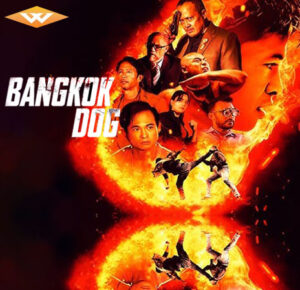

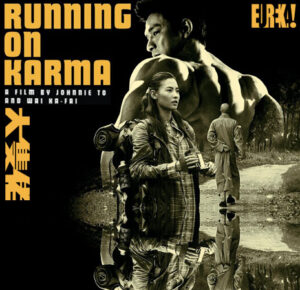
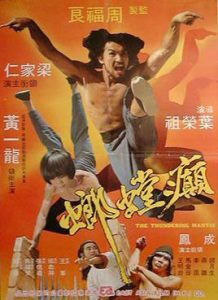
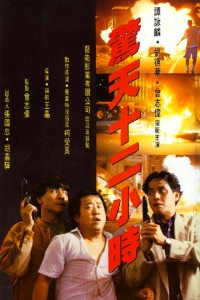
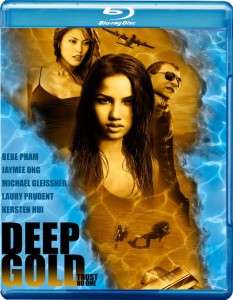
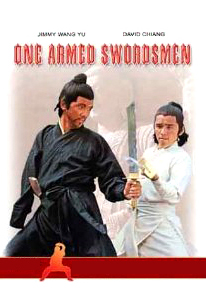
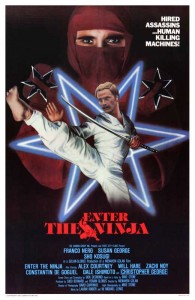
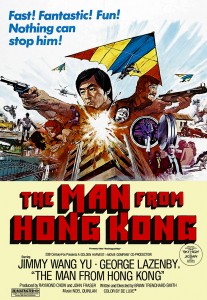
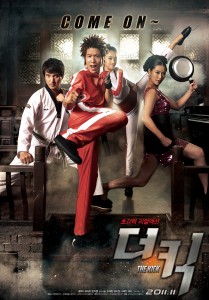
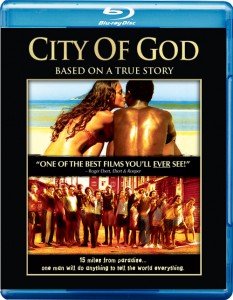
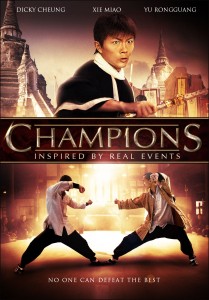
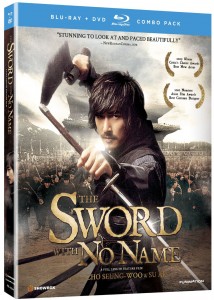
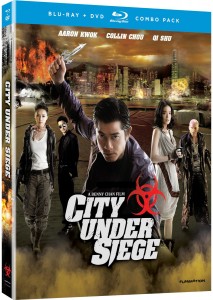
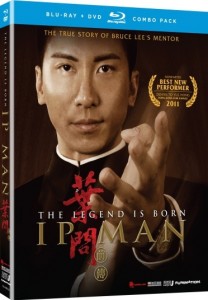
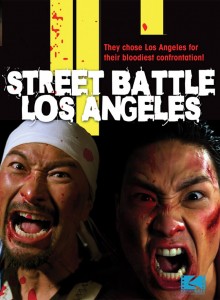
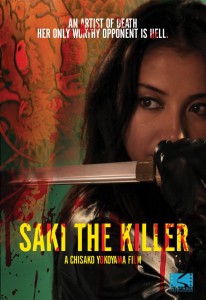
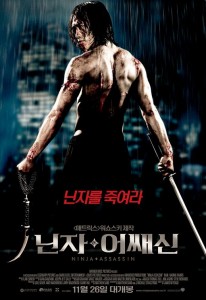




Be the 1st to Comment